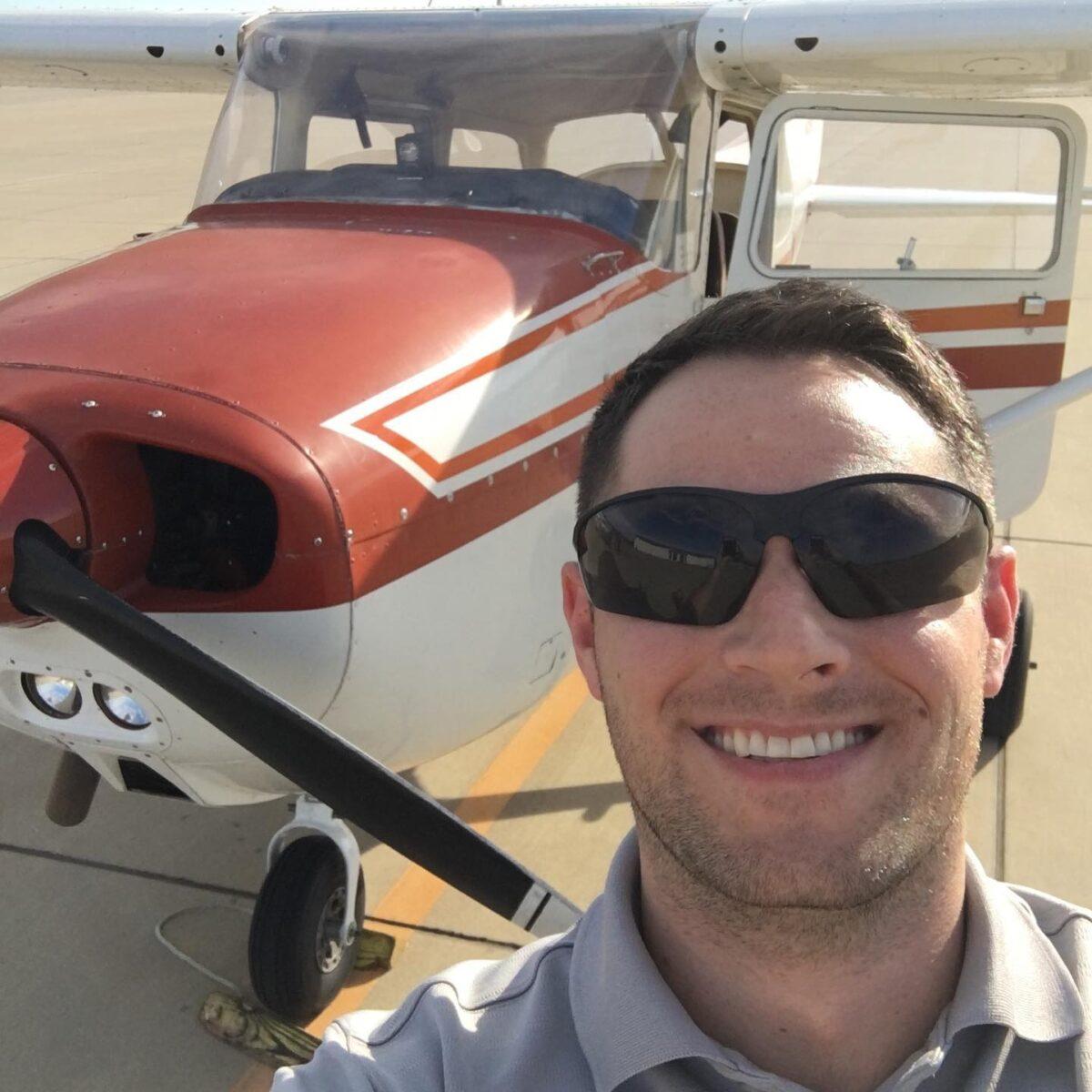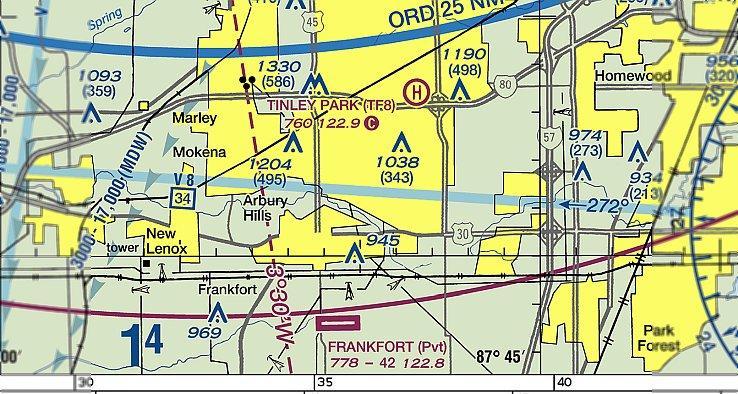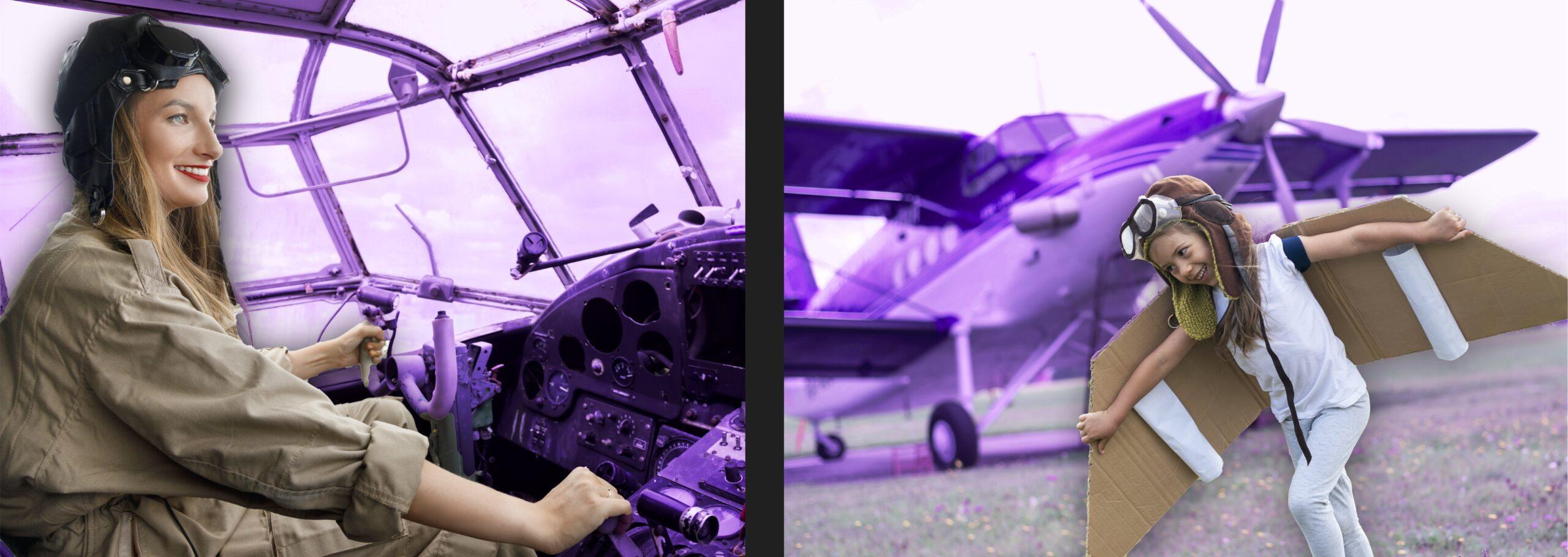How To Get A Pilot’s License
Article Content
According To Nolan Alexander Luckett

Which airfield did you study at?
I joined a fractional ownership club in Peoria that had a few planes and members who were certified as instructors and did it that way. Lucked out too. The president of the club is an instructor and also a veteran so he didn’t charge me his instructor rate with saved me about $1,500-2,000 in instructor fees.
How many ways are there to get a private pilot’s license?
By the FAA regulations there are two ways to get a private pilot license which is the license I went for. It’s the base license that gives you full operational privileges. Sport and recreational have greater limits and I wanted to avoid that by going private; most people start at private, the others were made so people who lose their license for medical reasons with age still have a means to fly something.
Are there different types of flight schools?
The types of school are part 61 and part 141. 141 is a formally structured flight school and tailored for those interested in working through multiple ratings and flying professionally; 61 is independently working with a certified flight instructor (CFI). I’m in Med school so part 61 worked best for me. It was at my own pace.
What do you need to pass the written test?
To get a license you need to pass a written test, oral exam, and practical test. Ground school prepares you for the written and oral and there are plenty of 3rd party options to learn from. I used Gleim for private pilot. It’s like $100, 1 year online access, and an endorsement once you finish the course to be eligible to take the written test. It has 11 units and I ground out 1 a day with a day off here and there for two weeks and when I sat for the test got a 95%… the two questions I got wrong are known in the flying community as incorrect but the FAA is slow to fix their question banks; you also only need a 70% to pass. There are other resources available also if you prefer books like the pilot handbook of aeronautical knowledge/airplane flying handbook or videos like through Sporty’s or MZeroA. Just depends on the format you learn from best.
How long did the process take, start to finish?
The whole process took me 10 months. Should have taken only 3-4 but I took December-March off to focus on med school because juggling both was a PITA, then when I was ready to take the oral/practical (same day, these two constitute the checkride which is your final licensing test) in mid March COVID hit and all the examiners closed for another 3 months until June when I was finally able to take my checkride. 14 CFR Part 61.109 outlines required flight experience to be eligible for a checkride. This is what you will be working with an instructor to meet. The hours are minimums and most people aren’t ready until a little later. Minimum is 40hrs, I was ready at 44 but because COVID I ended up at 57 when I could finally test. Most people test between 50 and 70 hours in the logbook. I got good quick and the delay made me average ?. Realistically if you consistently fly 3-4 hours a week you will have the hours in 12-14 weeks. It’s an hour before work 2x a week and then a bit of flying one day on the weekend. Very doable but consistency is key; my crazy schedule meant I was all over the place but that’s the great thing about part 61.
What was the hardest aspect of flying to learn?
Nothing was difficult. It’s like learning any new motor skill. Easy/hard isn’t the right perspective, it’s unfamiliar until it’s familiar. Like how learning to ride a bike is managing pedaling, steering, braking, leaning into turns, shifting gears, watching the road for hazards… then after a bit it’s just riding the bike.
Do you think anyone can learn to fly?
Anyone who can pass the medical exam can learn to fly. Private pilot requires having passed a 3rd class FAA flight physical. Which is a normal physical where they add in a drug test and vision test and is done by a doctor the FAA says can do them. Google pulls up a list of them and Chicago is full of them. Peoria had one. Do this early, no sense in getting halfway through training only to find out you aren’t medically eligible and have to stop or go for a more restricted rating. And I say anyone because once you pass the medical if you aren’t safe an instructor won’t let you solo, and if you hide it from them but really are unsafe an examiner won’t pass you, and if you hide it really well from them it won’t be long before nature takes its course and there aren’t any unsafe pilots again… But it’s really easy to fly safe. You almost have to try to be unsafe.
What trait/skill do you think someone needs to be a good pilot?
You just have to be disciplined. You can get a license at 17 so there’s your minimum maturity to handle it. Hold yourself to focus, procedures, and consistency. Checklists are important. There is no memorizing a checklist, even when it’s memorized. You go item by item during inspections and phases of flight. Takes just as long and resists complacency. In the cessna 172 I fly, the checklists ALL fit in large print on a double sided 11×7 card. And one side is even bigger print emergency procedures only; the normal stuff fits in regular big print on one side. Important, but there isn’t much to them.
How much does it cost to learn to fly?
Cost will vary depending on how you do it. “They” say set aside $10,000 and when you inevitability come up under you can treat it as a bonus or have extra money budgeted for flying after your license. If you calculate for minimums then every extra hour is over budget and that’s how people end up never finishing.
Expect between $7,000-9,000. My total expense from first penny to certificate was $8,448. That’s without the $1,500 my instructor didn’t charge me. BUT, it includes paying monthly dues during my delays, the extra 13 hours of flight time to maintain currency during COVID, and a few other miscellaneous expenses that I could have avoided had I taken a more direct approach that wasn’t really an option for me concurrent to medical school. I did the math and if my instructor charged me a normal $50/hr instruction rate ($30-50 is normal but he is an experienced instructor so I used the top dollar) and I didn’t delay and have all the other “my responsibility” extra expenses then my total cost would have been $7,020. Both numbers include all the extras like a headset, flight bag, logbook, maps and navigation equipment, test fees, study materials, monthly dues, club buy in, medical exam, etc… It ain’t cheap, you gotta want it. But when you think about what you’re doing, operating an airplane for $105/hr is less than the $60/half hour you’d rent a jet ski for on a vacation to Mexico.
Is it expensive to fly after you’ve gotten your license?
Club dependent. Mine is a non-profit, fractional ownership primary training club. There’s a buy in and all members own an equity stake in club assets so I’m not really renting from my club but paying a calculated cost per hour based on fuel consumption and maintenance expenses of my own plane + 5% for unforeseen expenses so the club doesn’t hit us with assessments and remains solvent. Cost per hour remains the same, not flying with an instructor that charges however… that would make it cheaper. If you put in a lot of hours and have the money, buying your own plane might make more sense than renting after you get a license. Then instead of maintenance costs linearly increasing with hours flown, maintenance expenses are fixed and become less per hour flown the more you fly. Googling around a bit you can find some people who have done the math on an excel sheet to find the cost of plane to hours flown break even point between renting and owning.
Do you get a cool badge to wear for getting your license (i.e. wings).
Nope! There are some traditions though. Like in the early days of open canopy wood and cloth planes flying by stick and rudder an instructor would communicate with the student by pulling left or right on their shirt tails. Shirt tails made by cutting a big chunk out of the back of their shirt. So once you do your first solo your instructor may have told you to wear an old shirt and they will cut a chunk out the back, sign and date it for you to mount and hang up. Once you pass a checkride you go home with a paper temporary certificate and the plastic one comes in the mail a few weeks later. I still haven’t gotten mine. Some people get a metal copy of their license mounted for display but that’s on you if you want it.
What is your favorite memory from the experience of learning to fly?
Part of learning to fly is learning recoveries. You will be taught how to induce and recover from various types of stalls (wing stops lifting, plane starts falling. Doesn’t just happen out of the blue but there are conditions like takeoff and landing where you pitch up or are flying slower and the risk is a bit higher). My instructor and I are both veterans so he liked to mess with me a bit. First stall drill he didn’t tell me what he was demonstrating, just that “now we’re going to do this…” Holy bowel movement staring at the ground scared me. Going from that “holy shit! what just happened I’m gonna die,” to confidently executing the drills in solo flight was a humbling demonstration of how quickly my flight skills were progressing.
Any advice you wish someone had told you before you started the process?
Lucky me, I got the advice before I started. My dad has a private pilot license so I heard a lot from him. Also I was trying to transition from enlisted to officer to fly jets in the Marines. An injury put a stop to that but I heard it all then too.
I already eluded to some of it. Over budget so you don’t get surprised and stop just short of the finish line. Have a plan in steps, not timelines. You can do things at your own pace but hold yourself accountable to be consistent in your training. Ask an instructor for a syllabus. If they don’t have one, use someone else. If they have one, compare it to another’s and pick the best one. Also go for an older instructor. That’s not to say the young guys are necessarily bad, but a lot of younger guys aren’t primarily teachers, they’re airline pilot wannabes. Instructing is a good way to cheaply build hours and get that first airline job. The older guys are more likely dedicated instructors or retired experienced pilots who just love being in the sky and getting others up there too. Mine was the latter. Never flew as a job but it was his lifelong hobby, loved every second of it, and couldn’t wait to spend his days in retirement teaching it. Also ask how many hours their students usually do their first solo at and how many they average to get their certificate. For solo, lower doesn’t always mean better. You’re looking for 10-15hrs. Too low and I’d question the instructor’s judgement before I’d praise them for their efficiency. Students just aren’t typically confidently ready much before then. I went up at 10.4 and that was quick. Too much longer and either the students either aren’t progressing fast enough which says the instructor may not be that good, or the students are progressing fine but the instructor may not trust their students. And if they’re really an instructor, not just a time builder, they will be keeping track of these milestones in an excel sheet. Both will answer the questions with “ehh… they usually do about X,” but if you press the question the good teacher that tracks student progress will be able to get back to you with an accurate answer.

For Further Curiosity
The History of Chicago Southland’s Other Forgotten Airfields
8 Amazing Firsts In Flight (Of Men and Women Pilots)

